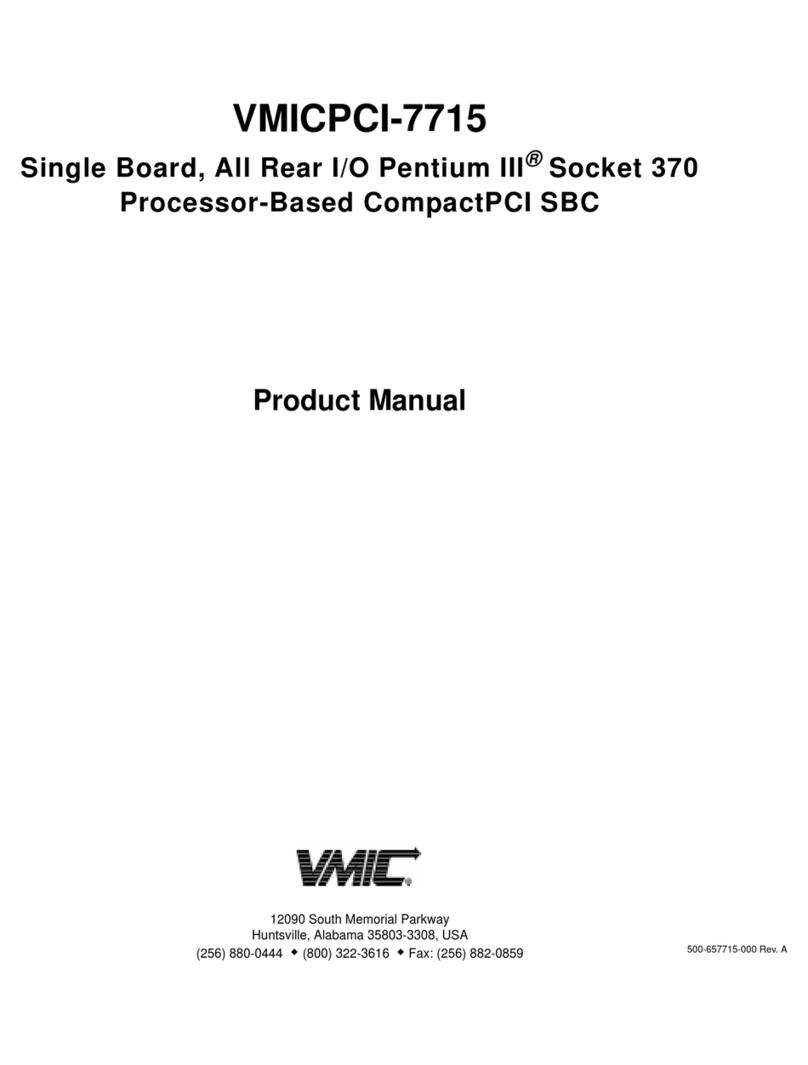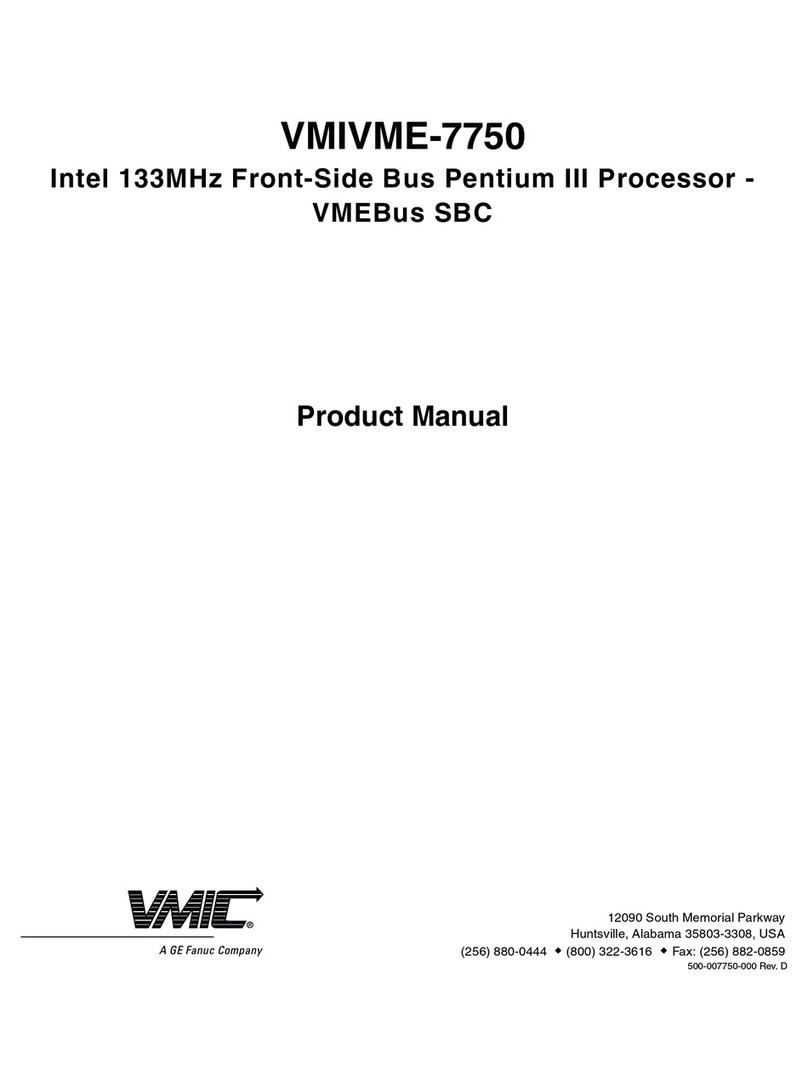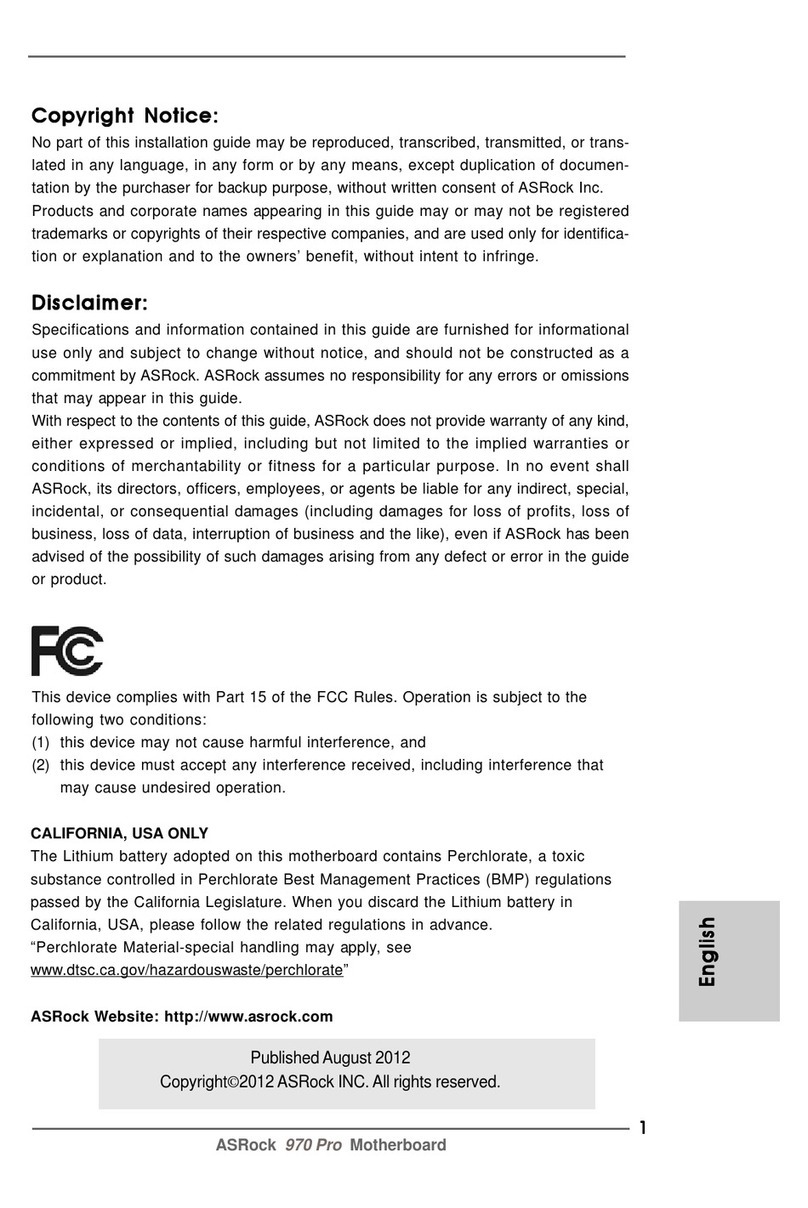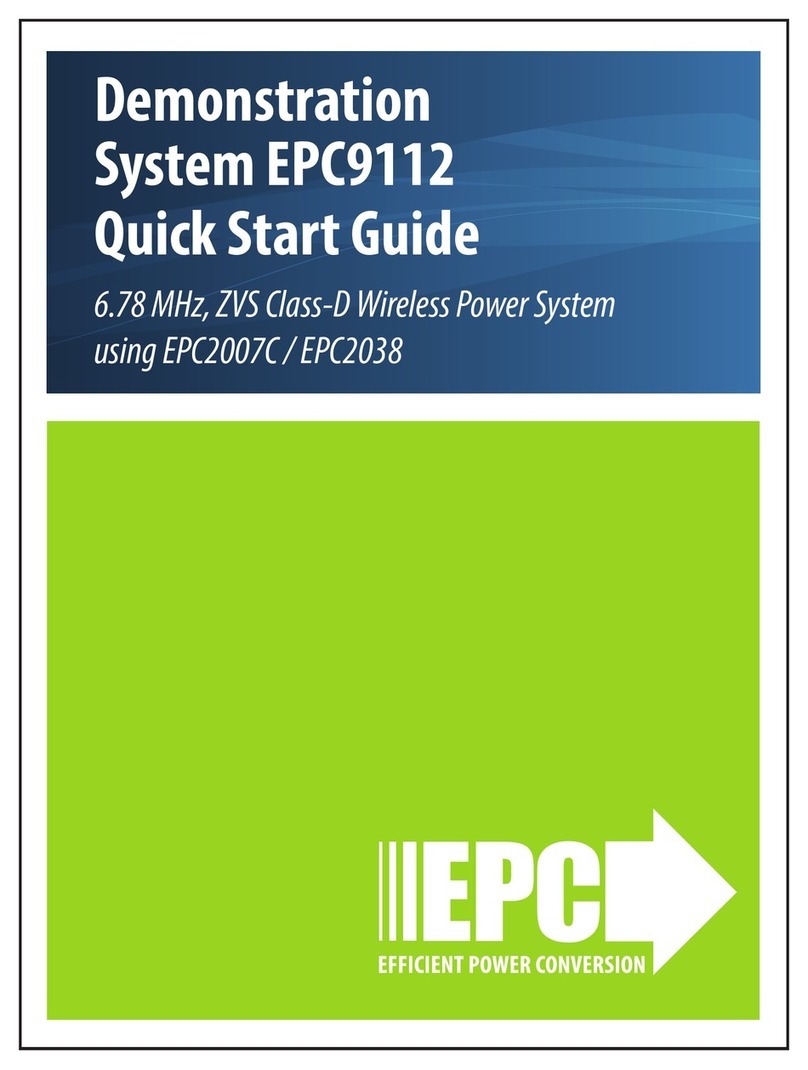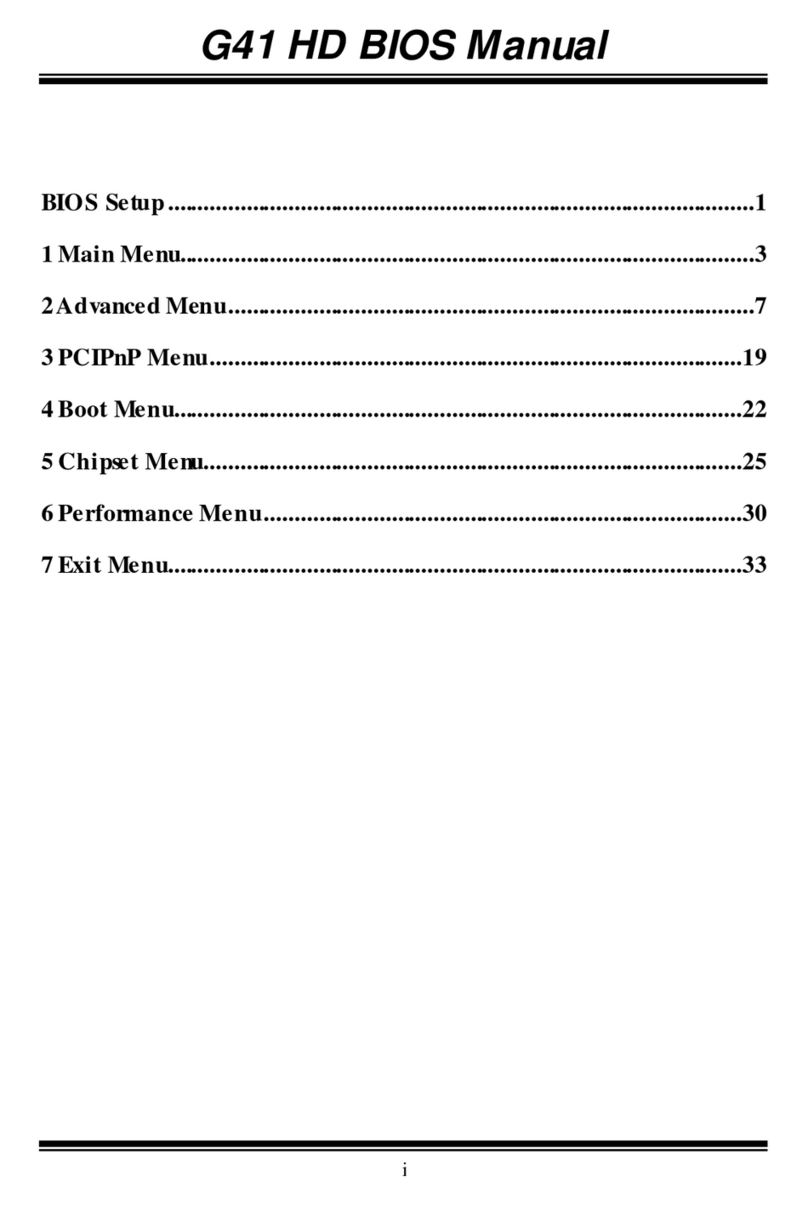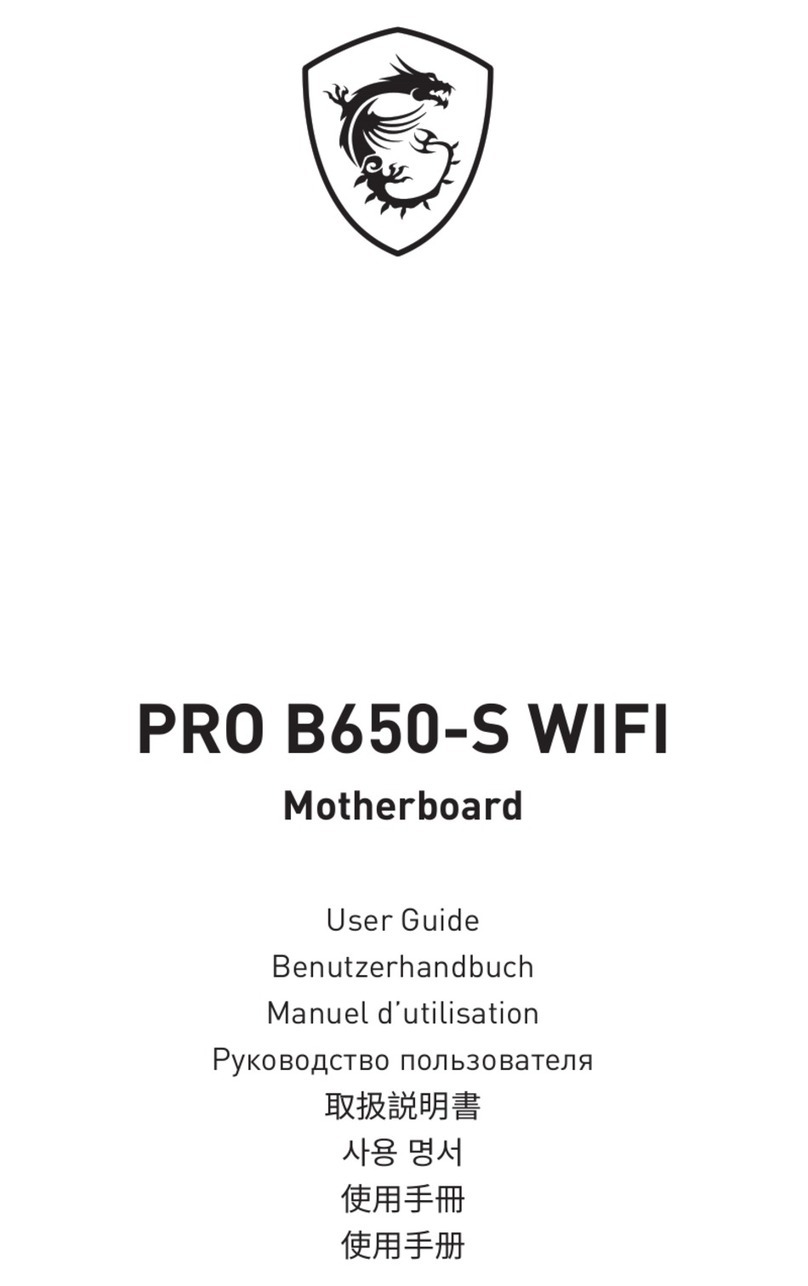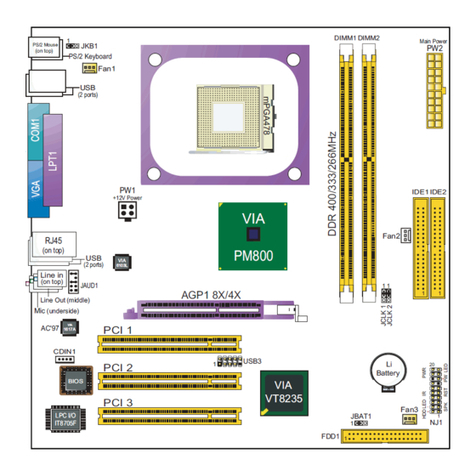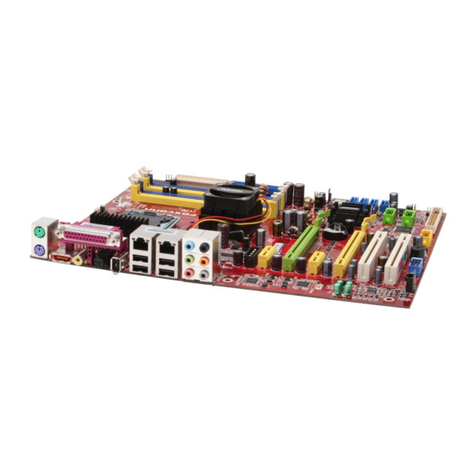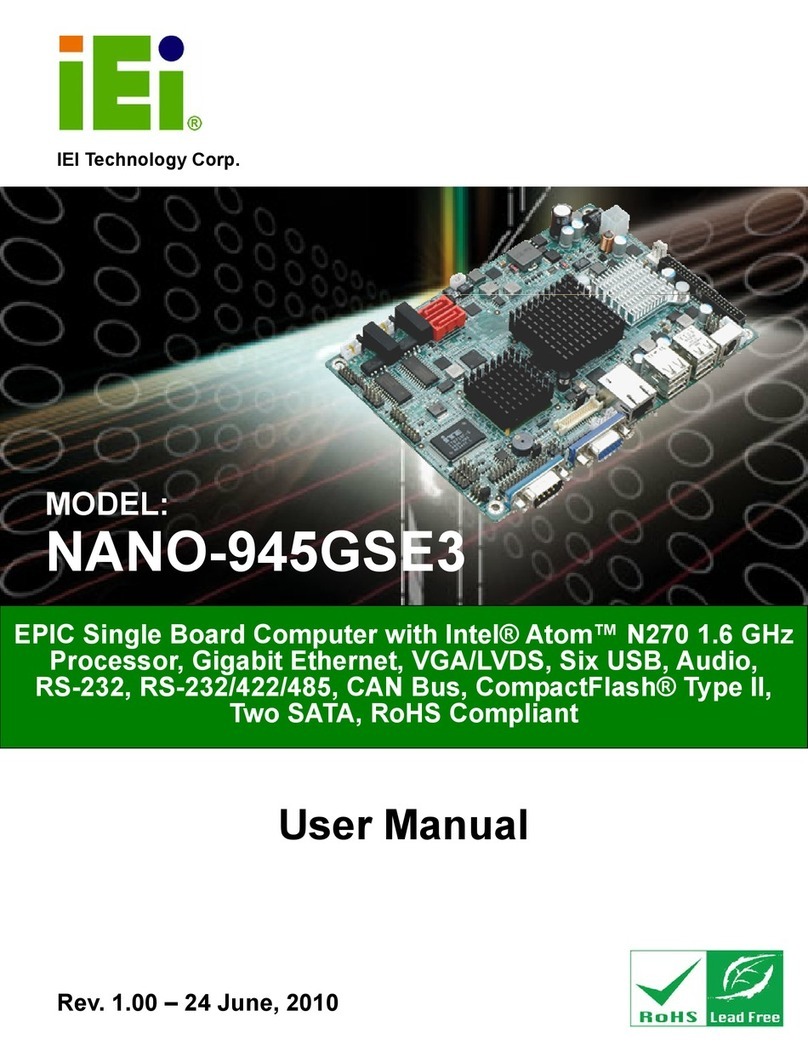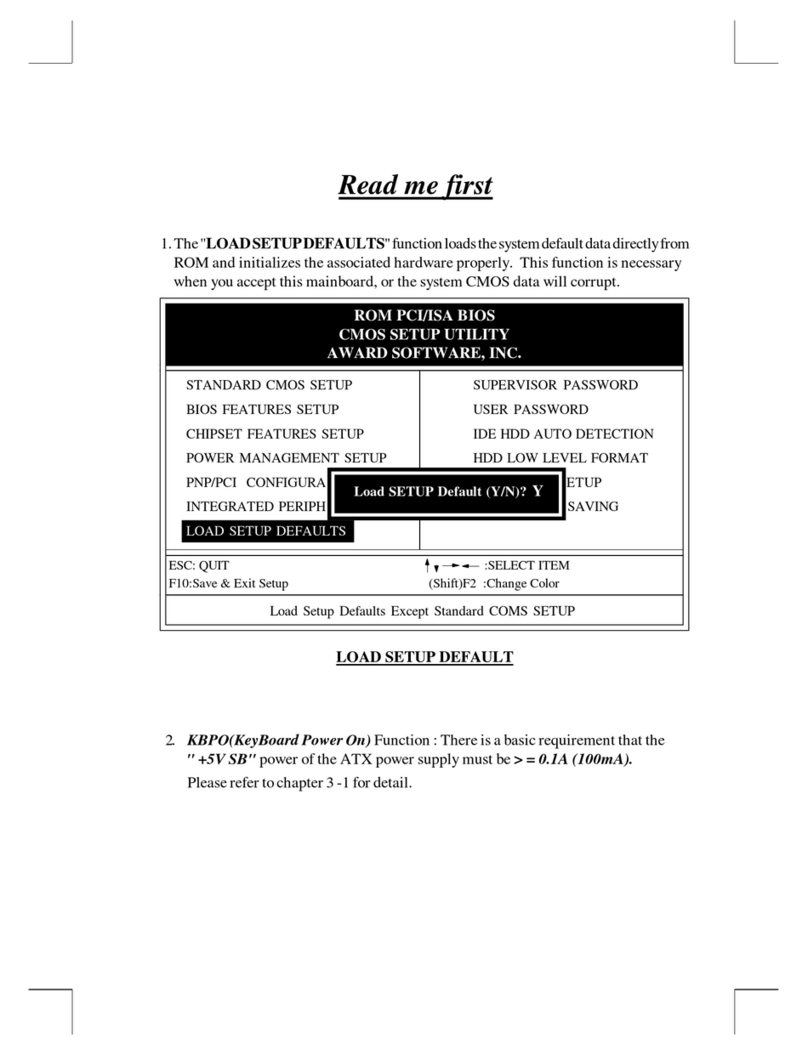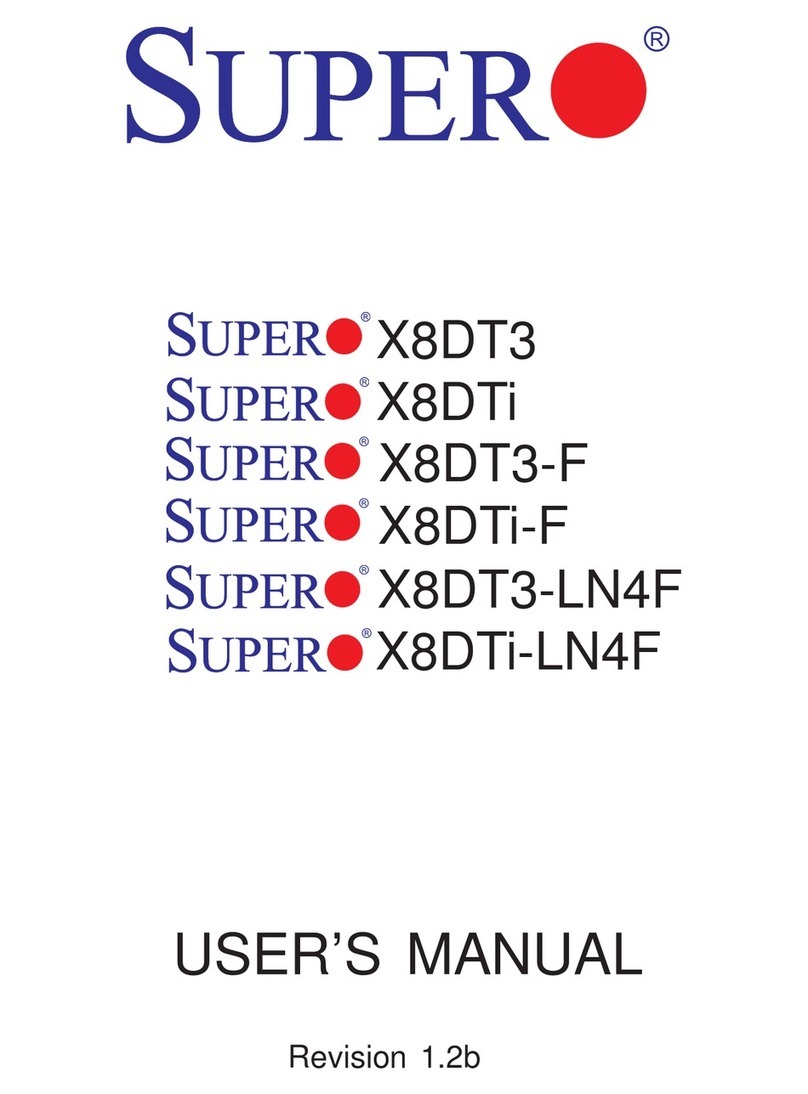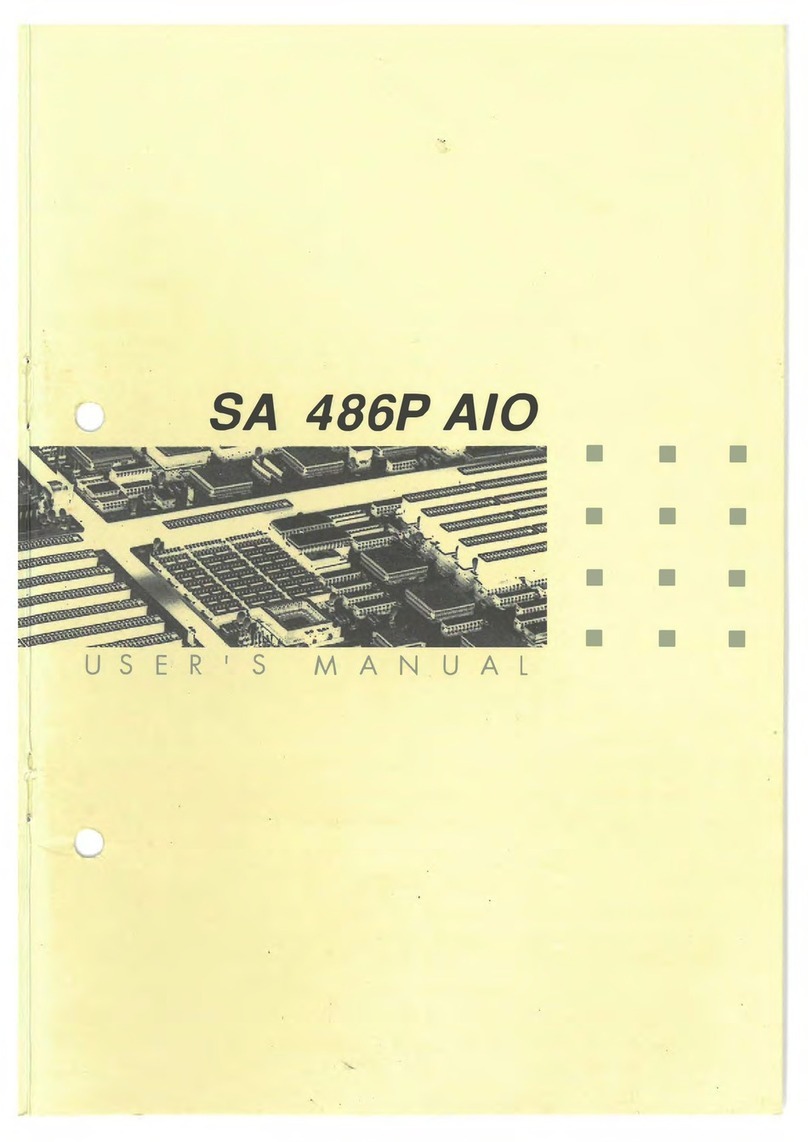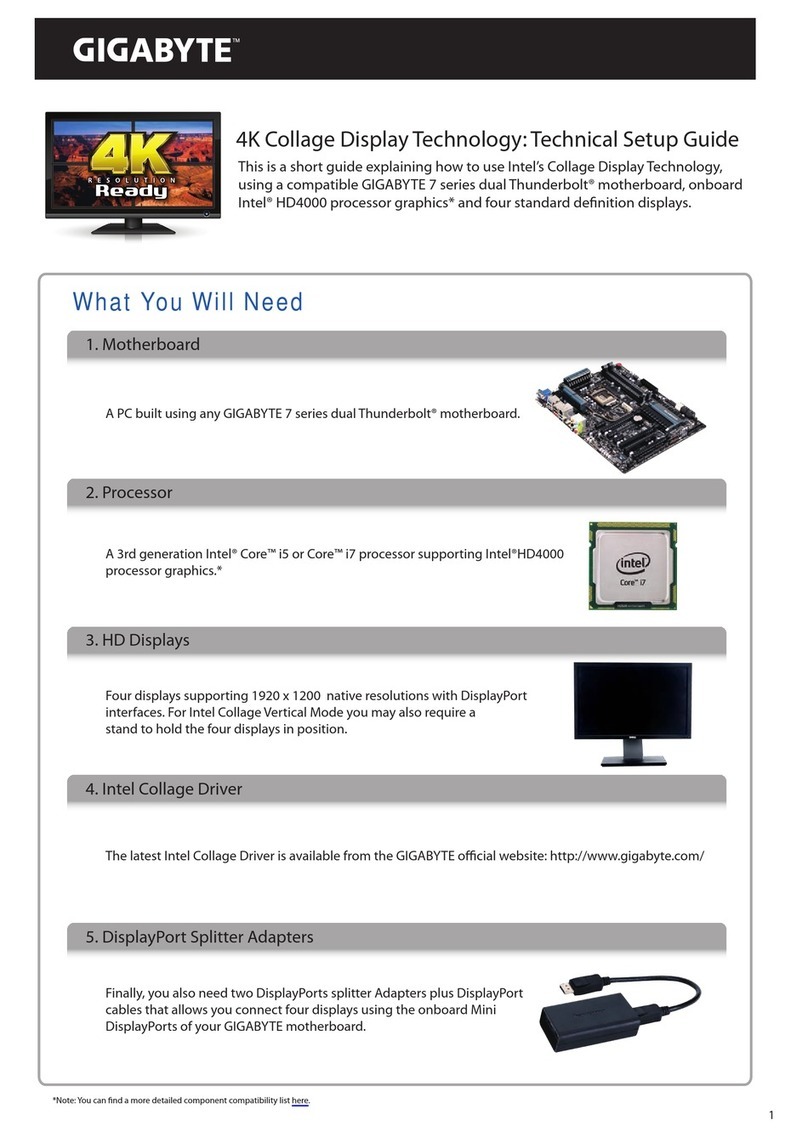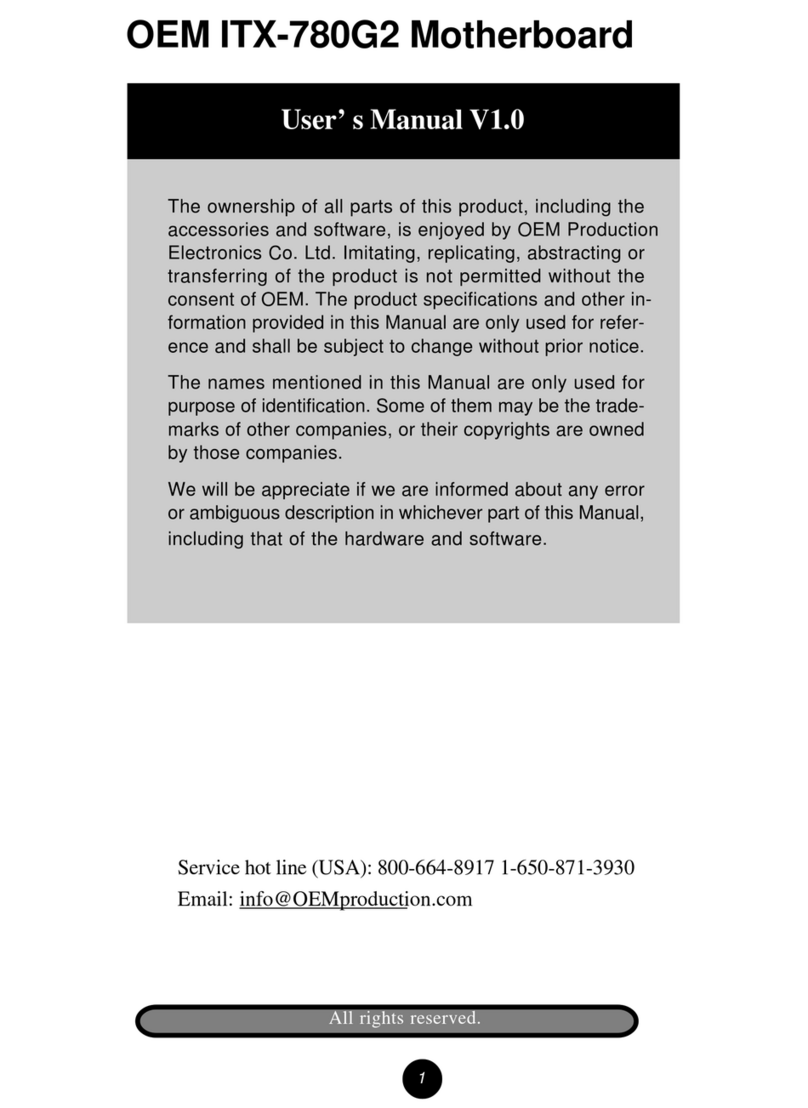VMIC VMIVME-4122 User manual

12090 South Memorial Parkway
Huntsville, Alabama 35803-3308, USA
(256) 880-0444 w(800) 322-3616 wFax: (256) 882-0859
VMIVME-4122
8-channel 12-bit Analog Output Board
Product Manual
500-004122-000 Rev. E


COPYRIGHT AND TRADEMARKS
VMIC
All Rights Reserved
This document shall not be duplicated, nor its contents used for any
purpose, unless granted express written permission from VMIC.
© Copyright 2003. The information in this document has been carefully checked and is believed to be entirely reliable.
While all reasonable efforts to ensure accuracy have been taken in the preparation of this manual, VMIC assumes no
responsibility resulting from omissions or errors in this manual, or from the use of information contained herein.
VMIC reserves the right to make any changes, without notice, to this or any of VMIC’s products to improve reliability,
performance, function, or design.
VMIC does not assume any liability arising out of the application or use of any product or circuit described herein; nor
does VMIC convey any license under its patent rights or the rights of others.
For warranty and repair policies, refer to VMIC’s Standard Conditions of Sale.
AMXbus, BITMODULE, COSMODULE, DMAbus, IOMax, IOWorks Foundation, IOWorks Manager, IOWorks Server,
MAGICWARE, MEGAMODULE, PLC ACCELERATOR (ACCELERATION), Quick Link, RTnet, Soft Logic Link, SRTbus,
TESTCAL, “The Next Generation PLC”, The PLC Connection, TURBOMODULE, UCLIO, UIOD, UPLC, Visual Soft Logic
Control(ler),
VMEaccess
, VMEbus Access
, VMEmanager
,
VMEmonitor
,VMEnet, VMEnet II, and
VMEprobe
are
trademarks and The I/O Experts, The I/O Systems Experts, The Soft Logic Experts, and The Total Solutions Provider are
service marks of VMIC.
The I/O man figure, IOWorks, IOWorks man figure, UIOC, Visual IOWorks and the VMIC logo are registered
trademarks of VMIC.
ActiveX, Microsoft, Microsoft Access, MS-DOS, Visual Basic, Visual C++, Win32, Windows, Windows NT, and XENIX
are registered trademarks of Microsoft Corporation.
MMX is trademarked, and Intel, Pentium and Celeron are registered trademarks of Intel Corporation.
PICMG and CompactPCI are registered trademarks of PCI Industrial Computer Manufacturers’ Group.
Other registered trademarks are the property of their respective owners.
(I/O man figure) (IOWorks man figure)


5
Table of Contents
List of Figures . . . . . . . . . . . . . . . . . . . . . . . . . . . . . . . . . . . . . . . . . . . . . . . . . . . . . . . . . . . . . . . . . . . 7
List of Tables. . . . . . . . . . . . . . . . . . . . . . . . . . . . . . . . . . . . . . . . . . . . . . . . . . . . . . . . . . . . . . . . . . . . 9
Overview . . . . . . . . . . . . . . . . . . . . . . . . . . . . . . . . . . . . . . . . . . . . . . . . . . . . . . . . . . . . . . . . . . . . . 11
Features. . . . . . . . . . . . . . . . . . . . . . . . . . . . . . . . . . . . . . . . . . . . . . . . . . . . . . . . . . . . . . . . . 12
VmeBus Products. . . . . . . . . . . . . . . . . . . . . . . . . . . . . . . . . . . . . . . . . . . . . . . . . . . . . . . . . . . . . 13
References . . . . . . . . . . . . . . . . . . . . . . . . . . . . . . . . . . . . . . . . . . . . . . . . . . . . . . . . . . . . . . . . . . 14
Physical Description and Specification . . . . . . . . . . . . . . . . . . . . . . . . . . . . . . . . . . . . . . . . . 14
Safety Summary. . . . . . . . . . . . . . . . . . . . . . . . . . . . . . . . . . . . . . . . . . . . . . . . . . . . . . . . . . . . . . 15
Warnings, Cautions and Notes. . . . . . . . . . . . . . . . . . . . . . . . . . . . . . . . . . . . . . . . . . . . . . . . . . . 16
Chapter 1 - Theory of Operation . . . . . . . . . . . . . . . . . . . . . . . . . . . . . . . . . . . . . . . . . . . . . . . . . . . 17
Functional Organization . . . . . . . . . . . . . . . . . . . . . . . . . . . . . . . . . . . . . . . . . . . . . . . . . . . . . . . . 18
VMEbus Interface. . . . . . . . . . . . . . . . . . . . . . . . . . . . . . . . . . . . . . . . . . . . . . . . . . . . . . . . . . . . . 19
Output DACs . . . . . . . . . . . . . . . . . . . . . . . . . . . . . . . . . . . . . . . . . . . . . . . . . . . . . . . . . . . . . . . . 20
VMIVME-4122 Buffers and Switches. . . . . . . . . . . . . . . . . . . . . . . . . . . . . . . . . . . . . . . . . . . 20
Bit Multiplexer and Analog-to-Digital Converter . . . . . . . . . . . . . . . . . . . . . . . . . . . . . . . . . . . . . . 21
Board ID Register. . . . . . . . . . . . . . . . . . . . . . . . . . . . . . . . . . . . . . . . . . . . . . . . . . . . . . . . . . . . . 22
Built-in Power Converter and ADC Power Supply . . . . . . . . . . . . . . . . . . . . . . . . . . . . . . . . . . . . 23
DAC Output Update Control. . . . . . . . . . . . . . . . . . . . . . . . . . . . . . . . . . . . . . . . . . . . . . . . . . . . . 24
External Simultaneous Input/Output Update . . . . . . . . . . . . . . . . . . . . . . . . . . . . . . . . . . . . . . . . 25
Chapter 2 - Configuration and Installation . . . . . . . . . . . . . . . . . . . . . . . . . . . . . . . . . . . . . . . . . . . 27
Unpacking Procedures. . . . . . . . . . . . . . . . . . . . . . . . . . . . . . . . . . . . . . . . . . . . . . . . . . . . . . . . . 28
Physical Installation . . . . . . . . . . . . . . . . . . . . . . . . . . . . . . . . . . . . . . . . . . . . . . . . . . . . . . . . 28
Before Applying Power: Checklist. . . . . . . . . . . . . . . . . . . . . . . . . . . . . . . . . . . . . . . . . . . . . 28
Configuration . . . . . . . . . . . . . . . . . . . . . . . . . . . . . . . . . . . . . . . . . . . . . . . . . . . . . . . . . . . . . . . . 29
Analog Output Connector Description . . . . . . . . . . . . . . . . . . . . . . . . . . . . . . . . . . . . . . . . . . . . . 30

VMIVME-4122 8-channel 12-bit Analog Output Board
6
VMIVME-4122 Analog Output Range. . . . . . . . . . . . . . . . . . . . . . . . . . . . . . . . . . . . . . . . . . .34
VMIVME-4122 Analog Output: Bipolar, Unipolar . . . . . . . . . . . . . . . . . . . . . . . . . . . . . . . . . .34
Board Address Jumpers . . . . . . . . . . . . . . . . . . . . . . . . . . . . . . . . . . . . . . . . . . . . . . . . . . . . .34
Address Modifiers Jumpers . . . . . . . . . . . . . . . . . . . . . . . . . . . . . . . . . . . . . . . . . . . . . . .34
Calibration . . . . . . . . . . . . . . . . . . . . . . . . . . . . . . . . . . . . . . . . . . . . . . . . . . . . . . . . . . . . . . . . . . .35
Equipment Required . . . . . . . . . . . . . . . . . . . . . . . . . . . . . . . . . . . . . . . . . . . . . . . . . . . . . . . .35
Analog Offset and Gain Calibrations. . . . . . . . . . . . . . . . . . . . . . . . . . . . . . . . . . . . . . . . . . . .35
Calibrating the VMIVME-4122: Potentiometer Adjustments . . . . . . . . . . . . . . . . . . . . . .35
Calibrating The VMIVME-4122. . . . . . . . . . . . . . . . . . . . . . . . . . . . . . . . . . . . . . . . . . . . .37
Chapter 3 - Programming . . . . . . . . . . . . . . . . . . . . . . . . . . . . . . . . . . . . . . . . . . . . . . . . . . . . . . . . .41
Base Registers . . . . . . . . . . . . . . . . . . . . . . . . . . . . . . . . . . . . . . . . . . . . . . . . . . . . . . . . . . . . . . .42
Board ID Register . . . . . . . . . . . . . . . . . . . . . . . . . . . . . . . . . . . . . . . . . . . . . . . . . . . . . . . . . .42
External Trigger Status Bits . . . . . . . . . . . . . . . . . . . . . . . . . . . . . . . . . . . . . . . . . . . . . . . . . .43
Trigger Mode Function Definitions . . . . . . . . . . . . . . . . . . . . . . . . . . . . . . . . . . . . . . . . . .45
Word 4: Data Access Pointer Register.. . . . . . . . . . . . . . . . . . . . . . . . . . . . . . . . . . . . . . . . . .48
Word 6: ADC Access Word Register . . . . . . . . . . . . . . . . . . . . . . . . . . . . . . . . . . . . . . . . . . .49
DAC Registers . . . . . . . . . . . . . . . . . . . . . . . . . . . . . . . . . . . . . . . . . . . . . . . . . . . . . . . . . . . .50
Chapter 4 - Maintenance . . . . . . . . . . . . . . . . . . . . . . . . . . . . . . . . . . . . . . . . . . . . . . . . . . . . . . . . . .53
Maintenance . . . . . . . . . . . . . . . . . . . . . . . . . . . . . . . . . . . . . . . . . . . . . . . . . . . . . . . . . . . . . . . . .53
Maintenance Prints . . . . . . . . . . . . . . . . . . . . . . . . . . . . . . . . . . . . . . . . . . . . . . . . . . . . . . . . . . . .54

7
List of Figures
Figure 1-1 VMIVME-4122 Functional Block Diagram. . . . . . . . . . . . . . . . . . . . . . . . . . . . . . . . . . . . . . . . . . . . . . . 24
Figure 2-1 VMIVME-4122 Configuration Jumpers. . . . . . . . . . . . . . . . . . . . . . . . . . . . . . . . . . . . . . . . . . . . . . . . . . 31
Figure 2-2 VMIVME-4122 P2 Connector . . . . . . . . . . . . . . . . . . . . . . . . . . . . . . . . . . . . . . . . . . . . . . . . . . . . . . . . . . 33
Figure 2-3 VMIVME-4122 Potentiometer Locations . . . . . . . . . . . . . . . . . . . . . . . . . . . . . . . . . . . . . . . . . . . . . . . . 36
Figure 2-4 VMIVME-4122 37-Pin D-Shell Calibration Connector. . . . . . . . . . . . . . . . . . . . . . . . . . . . . . . . . . . . 39
Figure 3-1 Flow Chart of the External Synchronization Control . . . . . . . . . . . . . . . . . . . . . . . . . . . . . . . . . . . . . 47
Figure 3-2 DAC Register for One Channel. . . . . . . . . . . . . . . . . . . . . . . . . . . . . . . . . . . . . . . . . . . . . . . . . . . . . . . . . 50

VMIVME-4122 8-channel 12-bit Analog Output Board
8

9
List of Tables
Table 2-1 VMIVME-4122 Test Points. . . . . . . . . . . . . . . . . . . . . . . . . . . . . . . . . . . . . . . . . . . . . . . . . . . . . . . . . . . . . . 29
Table 2-2 Analog Output Range Jumper Settings. . . . . . . . . . . . . . . . . . . . . . . . . . . . . . . . . . . . . . . . . . . . . . . . . . . 30
Table 2-3 VMIVME-4122 Analog Factory-Installed Jumpers. . . . . . . . . . . . . . . . . . . . . . . . . . . . . . . . . . . . . . . . . 30
Table 2-4 VMIVME-4122 P2 Connector Pin-Out. . . . . . . . . . . . . . . . . . . . . . . . . . . . . . . . . . . . . . . . . . . . . . . . . . . . 32
Table 2-5 Board Address Jumpers. . . . . . . . . . . . . . . . . . . . . . . . . . . . . . . . . . . . . . . . . . . . . . . . . . . . . . . . . . . . . . . . .34
Table 2-6 Address Modifier Selections . . . . . . . . . . . . . . . . . . . . . . . . . . . . . . . . . . . . . . . . . . . . . . . . . . . . . . . . . . .. . 34
Table 3-1 VMIVME-4122 Board Register Map . . . . . . . . . . . . . . . . . . . . . . . . . . . . . . . . . . . . . . . . . . . . . . . . . . . . . 42
Table 3-2 Word 0: Board Identification Register Bit Map (Read) . . . . . . . . . . . . . . . . . . . . . . . . . . . . . . . . . . . . . 43
Table 3-3 External Trigger Status Bit Map. . . . . . . . . . . . . . . . . . . . . . . . . . . . . . . . . . . . . . . . . . . . . . . . . . . . . . . . . . 43
Table 3-4 Word 2: Control and Status/ADC Status Register. . . . . . . . . . . . . . . . . . . . . . . . . . . . . . . . . . . . . . . . . 44
Table 3-5 Trigger Mode Function . . . . . . . . . . . . . . . . . . . . . . . . . . . . . . . . . . . . . . . . . . . . . . . . . . . . . . . . . . . . . . . .. . 45
Table 3-6 Board ADC Busy Bit Map. . . . . . . . . . . . . . . . . . . . . . . . . . . . . . . . . . . . . . . . . . . . . . . . . . . . . . . . . . . . . . . . 48
Table 3-7 Word 4: Data Access Pointer Register Bit Map . . . . . . . . . . . . . . . . . . . . . . . . . . . . . . . . . . . . . . . . . . . 48
Table 3-8 ADC Channel Address Bit map . . . . . . . . . . . . . . . . . . . . . . . . . . . . . . . . . . . . . . . . . . . . . . . . . . . . . . . .. . 48
Table 3-9 Word 6: ADC Access Word Bit Map. . . . . . . . . . . . . . . . . . . . . . . . . . . . . . . . . . . . . . . . . . . . . . . . . . . . . . 49
Table 3-10 DAC Registers Bit Map . . . . . . . . . . . . . . . . . . . . . . . . . . . . . . . . . . . . . . . . . . . . . . . . . . . . . . . . . . . . . . . .51

VMIVME-4122 8-channel 12-bit Analog Output Board
10

11
Overview
Introduction
The VMIVME-4122 is an Analog Output board providing 8-analog output channels,
with 12-bit resolution. The VMIVME-4122 series are voltage output boards. The
VMIVME-4122 is a 3U form factor board that fits in a VMEbus chassis. Each output
has a dedicated Digital-to-Analog Converter (DAC) assigned to it (two quad DACs).
After system resets, the DACs are driven to zero volts and, the field connect bit is
cleared. The VMIVME-4122 output is disconnected from the field wiring. The analog
voltage outputs can be disconnected from the field wiring for off-line testing. The
output range is jumper selectable. The Built-In-Test (BIT) is used to verify correct
operation of the unit. Each output can be read back, using an internal 12-bit
Analog-to-Digital Converter to verify it’s correct setting.

VMIVME-4122 8-channel 12-bit Analog Output Board
12
Features
Listed below are the primary features of the VMIVME-4122 board:
• 8-analog output channels
• One 12-bit D/A Converter (DAC) per output channel
• Built-In-Test (BIT) 12-bit ADC and 8-channel analog multiplexer
• Double buffered DAC input data latches
• Data read back capability from DAC output register
• Random update (Non-Scanning) and simultaneous update
• Discrete wire or mass terminated cables
• External Transistor Transistor Logic (TTL) level simultaneous update input
• External TTL output capable of triggering other VMIVME-4122 boards
• Software Trigger Update
• Front panel status LED
• Two's complement to offset binary data conversion
• Built-In ±15VDC power supply
• Unipolar (0 to +10V or 0 to +5V) or Bipolar (±2.5, ±5, ±10V)
• 10 mA maximum output current per channel
• Outputs can be disconnected from the field
•0.8
Ωoutput impedance
• 12-bit Built-In-Test (BIT) ADC range

VmeBus Products
13
VmeBus Products
The VMIVME-4122 is a single height 3U form factor board. This board complies with
the VMEbus specification (ANSI/IEEE STD1014-1987 IEC 821 and 297) with the
following mnemonics:
NOTE: ADC and DAC access must be D16 (word) only.
The VMEbus physical base address for the board is selected address lines A15
through A07 and Address modifier bit AM2. These are jumper-selectable and
decoded to support nonprivileged, supervisory or both address modifiers. Output
data is written to a 16-bit register (12-bit right justified and sign extended) that
corresponds to the output channel. This data is stored in on-board memory. The data
is modified by the board and sent to the corresponding output DAC. Built-In-Test
permits the user to select an output channel and determine if it is functioning
properly. The voltage measured on the VMIVME-4122 board is the voltage fed to the
buffer amp. After a system reset, the board will place all outputs to zero, clears all bits
in the Control/Status Register (CSR), and turn on the panel LED. The LED must be
extinguished under software control. This LED can be used to visually locate a faulty
board in a system. Reset places the board in a known configuration. This is explained
in detail in “Theory of Operation” on page 17 of this manual.
Addressing Mode A16 Responding Address Modifiers
$29 (Short nonprivileged I/O access) or
$2D (Short supervisory I/O access)
Data Accesses: D16, D08(EO), D08(O)

VMIVME-4122 8-channel 12-bit Analog Output Board
14
References
For a detailed description and specification of the VMEbus, please refer to:
VMEbus Specification Rev. C. and the VMEbus Handbook
VMEbus International Trade Assoc. (VITA)
7825 East Gelding Dr.
Suite 104
Scottsdale, AZ 85260
(602) 951-8866
(602) 951-0720 (FAX)
www.vita.com
The following application and configuration guides are available from VMIC to assist
the user in the selection, specification and implementation of systems based on
VMIC’s products.
Digital Input Board Application Guide (Document No. 825-000000-000)
Digital I/O (with Built-in-Test) Product Line Description (Document No. 825-000000-003)
Analog I/O Products (with Built-in-Test) Configuration Guide (Document No.
825-000000-005)
Connector and I/O Cable Application Guide (Document No. 825-000000-006)
Physical Description and Specification
Refer to VMIC’s Specification No. 800-004122-000 for detailed specifications.

Safety Summary
15
Safety Summary
The following general safety precautions must be observed during all phases of the
operation, service and repair of this product. Failure to comply with these precautions
or with specific warnings elsewhere in this manual violates safety standards of
design, manufacture and intended use of this product.
VMIC assumes no liability for the customer’s failure to comply with these
requirements.
Ground the System
To minimize shock hazard, the chassis and system cabinet must be connected to an
electrical ground. A three-conductor AC power cable should be used. The power
cable must either be plugged into an approved three-contact electrical outlet or used
with a three-contact to two-contact adapter with the grounding wire (green) firmly
connected to an electrical ground (safety ground) at the power outlet.
Do Not Operate in an Explosive Atmosphere
Do not operate the system in the presence of flammable gases or fumes. Operation of
any electrical system in such an environment constitutes a definite safety hazard.
Keep Away from Live Circuits
Operating personnel must not remove product covers. Component replacement and
internal adjustments must be made by qualified maintenance personnel. Do not
replace components with power cable connected. Under certain conditions,
dangerous voltages may exist even with the power cable removed. To avoid injuries,
always disconnect power and discharge circuits before touching them.
Do Not Service or Adjust Alone
Do not attempt internal service or adjustment unless another person capable of
rendering first aid and resuscitation is present.
Do Not Substitute Parts or Modify System
Because of the danger of introducing additional hazards, do not install substitute
parts or perform any unauthorized modification to the product. Return the product to
VMIC for service and repair to ensure that safety features are maintained.
Dangerous Procedure Warnings
Warnings, such as the example below, precede only potentially dangerous procedures
throughout this manual. Instructions contained in the warnings must be followed.
WARNING: Dangerous voltages, capable of causing death, are present in this system.
Use extreme caution when handling, testing and adjusting.

VMIVME-4122 8-channel 12-bit Analog Output Board
16
Warnings, Cautions and Notes
STOP informs the operator that a practice or procedure should not be performed.
Actions could result in injury or death to personnel, or could result in damage to or
destruction of part or all of the system.
WARNING denotes a hazard. It calls attention to a procedure, practice or condition,
which, if not correctly performed or adhered to, could result in injury or death to
personnel.
CAUTION denotes a hazard. It calls attention to an operating procedure, practice or
condition, which, if not correctly performed or adhered to, could result in damage to
or destruction of part or all of the system.
NOTE denotes important information. It calls attention to a procedure, practice or
condition which is essential to highlight.

17
CHAPTER
Theory of Operation
Introduction
The VMIVME-4122 Analog Output board provides 8-analog output channels with 12-
bit resolution. The VMIVME-4122 can source or sink 10 mA at up to ±10V. Each
output has a dedicated Digital-to-Analog Converter (DAC) assigned to it. After
system resets the DACs are driven to zero. The analog outputs can be disconnected
from the field wiring for off-line testing. The output voltage range is user selectable
with jumpers. The base address and the access mode are jumper selectable.
1

18
1VMIVME-4122 8-channel 12-bit Analog Output Board
Functional Organization
The VMIVME-4122 is divided into the following functional categories. Each category
will be discussed in detail in this section of the manual.
• Bus interface
• Data manipulation
• Output DACs
• BIT multiplexer and ADC

19
VMEbus Interface 1
VMEbus Interface
The VMIVME-4122 communications registers are memory mapped as 64 (decimal)
16-bit words (128-bytes) in memory. The registers are contiguous and may be user
located on any 128-byte boundary within the short I/O space of the VMEbus. The
board can be user configured to respond to short supervisory or short nonprivileged
data accesses, or both.
During each read or write operation, all VMEbus control signals are ignored unless
the board selection comparator detects a match between the on board selection
jumpers shown in Figure 2-1 on page 31 and the address and address modifier line
from the back plane. The appropriate board response occurs if a valid match is
detected, after which the open collector DTACK* interface signal is asserted (driven
low). Subsequent completion of the bus master’s read or write cycle causes the board-
generated DTACK* signal to return to the OFF state.
After board-selection has occurred, three groups of VMEbus signals control
communication with the board. They are as follows:
1. Data bus lines D00 to D15
2. Address lines A01, A02, A03, A04
3. Bus Control Signals:
a. Write
b. DS0*, DS1*
Data Bus lines are bi-directional and move data to and from the board through a 16-bit
data transceiver in response to control signals from the control decoder. The data
transceiver serves as a buffer for the internal data bus which interconnects all data
devices on the board.
Address lines A01 through A07 map the 12 registers into the bottom of a 128-byte
range within the VMEbus address space described in “Programming” on page 41. The
control signals determine whether data is to be moved to the VMIVME-4122 (write) or
from the VMIVME-4122 (read), provide the necessary Data Strobes (DS0*,DS1*). A
SYSRESET* input resets all CSR bits.
Static controls are latched into the Control and Status Byte and are used to establish
the operational mode of the board. Status flags, necessary for monitoring and
controlling the external trigger logic and the ADC, are read through the Trigger Byte
and ADC Status Byte respectively. The Control Registers and Status Registers are
referred to collectively as the Control/Status Register (CSR), since they are at the same
address. The WRITE signal determines which one is accessed.

20
1VMIVME-4122 8-channel 12-bit Analog Output Board
Output DACs
The output DACs (two quad DACs) convert the manipulated data into a voltage
based upon the reference voltage applied to the converters.
In the VMIVME-4122 this reference voltage is selected by jumpers. This determines
the output voltage range of the DAC. See Table 2-2 on page 30 for jumper
configuration.
VMIVME-4122 Buffers and Switches
The DAC’s output is buffered, which provides the high current drive for the outputs.
The output is routed through an electronic switch that is used to disconnect it from
the cable for off-line operation.
Table of contents
Other VMIC Motherboard manuals



